Traditionalist Issues
 |
 |
 |
 |
 |
 |
 |
Dialogue Mass - CII
Minor Clerical Orders Suppressed
for Lay ‘Active Participation’
If Pius XII allowed the reformers to park their tanks on the clerical lawn, it was Paul VI who gave the command in Ministeria quaedam (1972) (1) for them to open fire on the four Minor Orders, (2) plus the Major Order of Sub-Deacon. (3) The intention was to discontinue the Church’s immemorial custom of conferring all these clerical offices on candidates for Ordination to the Priesthood. Pope Paul VI stated that only two of the former Minor Orders – Lector and Acolyte – would be retained and renamed “ministries” which could be performed by laymen. (4)
It should be noted that, before this reform, the Minor Orders and Sub-Diaconate were all ranks of the Church’s hierarchy and, from the early centuries of the Church, were considered as clerical offices. They were conferred in non-sacramental rites of ordination on selected men, for the most part as stages in ascending sequence towards the Priesthood. The crucial factor here is that recipients of these Orders were clerics in the juridical sense, specifically separated from the rest of the faithful for service at the altar. There was thus never any recognition of a right of lay people to perform liturgical functions.
It is only when we realize this that we can see what a monumental rupture in centuries of law and custom, tradition and thinking was brought about by Ministeria quaedam. For in that document Paul VI, quoting Sacrosanctum Concilium, stated that “active participation” of the laity in these ministries was their “right and duty by reason of their Baptism.” In other words, according to the “new theology,” Baptism ipso facto confers on the laity, through their membership of the “common priesthood of all believers,” an entitlement to “active participation” in the liturgy.
Where did this come from?
This idea, borrowed from Protestantism, was a complete novelty in the Catholic Church when it was first introduced by Dom Lambert Beauduin in 1909. The entire basis of his thesis rested on a false premise. It was never part of Catholic teaching, either in the West or the East, that membership of the “common priesthood” conferred an automatic right to any active role in the liturgy. That had been the prerogative of the ordained, whether in Minor or Major Orders. Rather, Minor Orders were regarded as a subset of the Diaconate from which they drew their raison d’être.
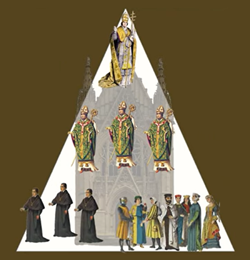
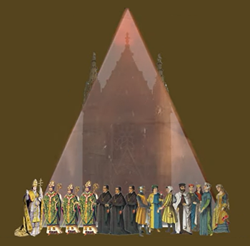 The Catholic theologian who gave the greatest boost to the “common priesthood” theory as a catalyst for lay “active participation” was undoubtedly Fr. Yves Congar. Throughout his ecclesiastical career, he conducted an unrelenting campaign in books, articles and lectures against the juridical structures of the Church that upheld her monarchical character, reflecting the hierarchy established by Our Lord of spiritual rulers (the clergy) over the ruled (the laity). He eschewed this two-state constitution of the Church as an unequal society, and replaced it with what he called a “total ecclesiology,” a communion of all the “People of God” with co-responsibility for running the Church. (5) In Congar’s words, “everyone does everything” in the ecclesial community, bearing responsibility for liturgical, administrative and governing functions. (6)
The Catholic theologian who gave the greatest boost to the “common priesthood” theory as a catalyst for lay “active participation” was undoubtedly Fr. Yves Congar. Throughout his ecclesiastical career, he conducted an unrelenting campaign in books, articles and lectures against the juridical structures of the Church that upheld her monarchical character, reflecting the hierarchy established by Our Lord of spiritual rulers (the clergy) over the ruled (the laity). He eschewed this two-state constitution of the Church as an unequal society, and replaced it with what he called a “total ecclesiology,” a communion of all the “People of God” with co-responsibility for running the Church. (5) In Congar’s words, “everyone does everything” in the ecclesial community, bearing responsibility for liturgical, administrative and governing functions. (6)
In particular, he impugned the juridical system of law that separated the laity from the clergy, excluding them from the performance of liturgical acts reserved to the latter. Congar’s dynamite was strategically placed to cause optimal structural damage. If the hierarchical structure of the Church were made to collapse into an amorphous, egalitarian “priesthood of all believers,” the Church could not survive the loss of her monarchical constitution, and would simply disintegrate – as, indeed, she has done in many parts of the world today. Congar’s influence at Vatican II and his success in winning adherents among the Hierarchy to his anti-traditional point of view are well-documented and beyond dispute.
Paul VI adopts the progressivists’ anti-clerical agenda
When Ministeria quaedam was published in 1972, it was obvious that the document had been drawn up within the conceptual framework of the “new theology,” and that Paul VI had simply adopted uncritically Congar’s ideas on how things should be in the Church. The Pope’s rationale for the demise of the Minor Orders was as follows:
“Since minor orders have not always been the same and many functions connected with them, as at present, have also been exercised by the laity, it seems fitting to re-examine this practice and to adapt it to contemporary needs.”
It would be wise to be sceptical about taking this argument at face value for two reasons. First, because no one has provided a convincing explanation as to how the vicissitudes of History affecting the Minor Orders constitute grounds for their abolition.
Second, because of its circularity: there is no reason to accept the premise (that historical developments had corrupted the integrity of the Minor Orders) unless one has already accepted the conclusion (that they should be abolished). That was not the approach of the Council of Trent, which sought to restore and uphold them. As we are about to see, Paul VI drew on the work of key leaders of the Liturgical Movement who were already committed to a radical reform of the Church’s Constitution to eliminate the clergy/laity divide. They all agreed that Minor Orders were an impediment to their goals of lay “active participation,” and so the Pope had no compunction in quashing them.
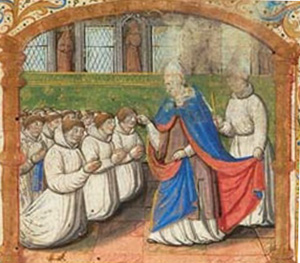 Msgr. Balthasar Fischer, co-founder (1947) and Professor at the German Liturgical Institute in Trier, (7) produced a piece of research on the history of the Minor Orders (8) that furnished the points made by Pope Paul. But the research was based on selective data that failed to give solid, compelling reasons for ending a tradition of minor clerical orders that stretched back – albeit with some modifications – to early Christianity.
Msgr. Balthasar Fischer, co-founder (1947) and Professor at the German Liturgical Institute in Trier, (7) produced a piece of research on the history of the Minor Orders (8) that furnished the points made by Pope Paul. But the research was based on selective data that failed to give solid, compelling reasons for ending a tradition of minor clerical orders that stretched back – albeit with some modifications – to early Christianity.
In the absence of an intellectually satisfying argument, all that Msgr. Fischer could offer was derision of the ancient custom. He decried the Minor Orders as a useless appendage that turned the Church into “an army without sub-officers,” (9) i.e., “all Generals and no Privates.” The message he conveyed was that the Minor Orders were a fictional role exercised by clerics wearing the outward trappings of office but achieving no useful purpose. (10) The situation, he urged, cried out for long-overdue reform. (11)
Dom Bernard Botte, OSB
No less savage in his denunciation of Minor Orders was Dom Bernard Botte, a monk of Mont César, Louvain, and disciple of Beauduin and the first Director (1956-1964) of the Institut Supérieur de Liturgie in Paris. He was a Consultor for the Consilium, and as Chairman of its sub-committee for the New Pontifical, he collaborated substantially in creating the Protestantized post-Vatican II Ordination rites. This explains his negative attitude to the Minor Orders, which were steps to the Priesthood. He recommended they should be abolished and given to lay people, which is exactly what transpired under Paul VI.
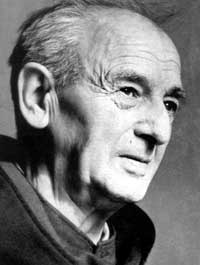 It is highly significant that, as Archbishop Thomas Cranmer had already abolished them (plus the Sub-Diaconate) in his new Ordination rite of 1550, this reform would bring the Church into closer conformity with Protestant practice – and, inevitably, with Protestant beliefs.
It is highly significant that, as Archbishop Thomas Cranmer had already abolished them (plus the Sub-Diaconate) in his new Ordination rite of 1550, this reform would bring the Church into closer conformity with Protestant practice – and, inevitably, with Protestant beliefs.
Fr. Botte poured scorn on the Minor Orders as a senseless anachronism that had no connection with the reality of modern life outside the seminary and, therefore, lacked a “pastoral” use. He denounced them as a “juridical fiction” because, he argued, all that remained was the title without a substantive function. (12)
What he failed to appreciate, or deliberately misunderstood, was that they are not so much about activities as about receiving certain rights and powers in the Church, which would be exercised after Ordination to the Priesthood. These were part of a priest’s spiritual formation, his “apprenticeship” as he climbed the hierarchical ladder in incremental stages towards his goal.
Supernatural symbolism
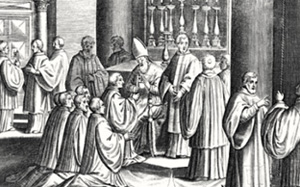 The Porter (Doorkeeper) may no longer open the church door and stand guard corporeally to keep out intruders, as in days of persecution, but the symbol of his office (a key) signifies a vital aspect of the Priesthood to which he aspires: that of opening spiritual doors, of guarding the Blessed Sacrament from profanation (including reception of Holy Communion by public sinners), of protecting the ceremonies from irreverent disturbance. His Office has been made redundant by the “all are welcome” mantra and permissive atmosphere of post-Vatican II Progressivism, which opened the door to profanation in the sanctuary and threw away the key.
The Porter (Doorkeeper) may no longer open the church door and stand guard corporeally to keep out intruders, as in days of persecution, but the symbol of his office (a key) signifies a vital aspect of the Priesthood to which he aspires: that of opening spiritual doors, of guarding the Blessed Sacrament from profanation (including reception of Holy Communion by public sinners), of protecting the ceremonies from irreverent disturbance. His Office has been made redundant by the “all are welcome” mantra and permissive atmosphere of post-Vatican II Progressivism, which opened the door to profanation in the sanctuary and threw away the key.
The Exorcist
Fr. Botte dismissed the Order of Exorcist as a useless sinecure, charging that it conferred a title and status but involved no active service. The Exorcist, he scoffed, “cannot exorcize anyone or anything.” (13) But that is to miss the point entirely. For, the power given by Christ to the Apostles to drive away demonic influences was conferred on the Exorcist during the minor ordination rite in preparation for when, as a priest, he would routinely perform a rite of exorcism on infants and adults during Baptism, and also exorcize oil, water and salt in the liturgy. (14)
Nolite locum dare diabolo (Eph. 4:27) (15)
On the command of Paul VI, the Order of Exorcist was eliminated from the liturgy – in the same year that he had expressed his feeling that “through some crack the smoke of Satan has entered the temple of God” (16) – leaving Novus Ordo priests in an invidious position, for the new Rite of “Exorcism” he introduced did not command the Devil to depart. (Presumably he is still there). It can be no coincidence that this reform gave leeway to a flood of demonic influences in the Church, of which the clergy abuse scandal and the hatred for Catholic Tradition are prime examples.
Continued

It should be noted that, before this reform, the Minor Orders and Sub-Diaconate were all ranks of the Church’s hierarchy and, from the early centuries of the Church, were considered as clerical offices. They were conferred in non-sacramental rites of ordination on selected men, for the most part as stages in ascending sequence towards the Priesthood. The crucial factor here is that recipients of these Orders were clerics in the juridical sense, specifically separated from the rest of the faithful for service at the altar. There was thus never any recognition of a right of lay people to perform liturgical functions.
It is only when we realize this that we can see what a monumental rupture in centuries of law and custom, tradition and thinking was brought about by Ministeria quaedam. For in that document Paul VI, quoting Sacrosanctum Concilium, stated that “active participation” of the laity in these ministries was their “right and duty by reason of their Baptism.” In other words, according to the “new theology,” Baptism ipso facto confers on the laity, through their membership of the “common priesthood of all believers,” an entitlement to “active participation” in the liturgy.
Where did this come from?
This idea, borrowed from Protestantism, was a complete novelty in the Catholic Church when it was first introduced by Dom Lambert Beauduin in 1909. The entire basis of his thesis rested on a false premise. It was never part of Catholic teaching, either in the West or the East, that membership of the “common priesthood” conferred an automatic right to any active role in the liturgy. That had been the prerogative of the ordained, whether in Minor or Major Orders. Rather, Minor Orders were regarded as a subset of the Diaconate from which they drew their raison d’être.

From a monarchical Catholic Church, (above); to a progressivist egalitarian
‘priesthood of all believers,’ (below)

In particular, he impugned the juridical system of law that separated the laity from the clergy, excluding them from the performance of liturgical acts reserved to the latter. Congar’s dynamite was strategically placed to cause optimal structural damage. If the hierarchical structure of the Church were made to collapse into an amorphous, egalitarian “priesthood of all believers,” the Church could not survive the loss of her monarchical constitution, and would simply disintegrate – as, indeed, she has done in many parts of the world today. Congar’s influence at Vatican II and his success in winning adherents among the Hierarchy to his anti-traditional point of view are well-documented and beyond dispute.
Paul VI adopts the progressivists’ anti-clerical agenda
When Ministeria quaedam was published in 1972, it was obvious that the document had been drawn up within the conceptual framework of the “new theology,” and that Paul VI had simply adopted uncritically Congar’s ideas on how things should be in the Church. The Pope’s rationale for the demise of the Minor Orders was as follows:
“Since minor orders have not always been the same and many functions connected with them, as at present, have also been exercised by the laity, it seems fitting to re-examine this practice and to adapt it to contemporary needs.”
It would be wise to be sceptical about taking this argument at face value for two reasons. First, because no one has provided a convincing explanation as to how the vicissitudes of History affecting the Minor Orders constitute grounds for their abolition.
Second, because of its circularity: there is no reason to accept the premise (that historical developments had corrupted the integrity of the Minor Orders) unless one has already accepted the conclusion (that they should be abolished). That was not the approach of the Council of Trent, which sought to restore and uphold them. As we are about to see, Paul VI drew on the work of key leaders of the Liturgical Movement who were already committed to a radical reform of the Church’s Constitution to eliminate the clergy/laity divide. They all agreed that Minor Orders were an impediment to their goals of lay “active participation,” and so the Pope had no compunction in quashing them.

The Council of Trent upheld Minor Orders;
above, a Bishop ordains new acolytes
In the absence of an intellectually satisfying argument, all that Msgr. Fischer could offer was derision of the ancient custom. He decried the Minor Orders as a useless appendage that turned the Church into “an army without sub-officers,” (9) i.e., “all Generals and no Privates.” The message he conveyed was that the Minor Orders were a fictional role exercised by clerics wearing the outward trappings of office but achieving no useful purpose. (10) The situation, he urged, cried out for long-overdue reform. (11)
Dom Bernard Botte, OSB
No less savage in his denunciation of Minor Orders was Dom Bernard Botte, a monk of Mont César, Louvain, and disciple of Beauduin and the first Director (1956-1964) of the Institut Supérieur de Liturgie in Paris. He was a Consultor for the Consilium, and as Chairman of its sub-committee for the New Pontifical, he collaborated substantially in creating the Protestantized post-Vatican II Ordination rites. This explains his negative attitude to the Minor Orders, which were steps to the Priesthood. He recommended they should be abolished and given to lay people, which is exactly what transpired under Paul VI.

A revolted Botte scorned the Minor Orders of the Church
Fr. Botte poured scorn on the Minor Orders as a senseless anachronism that had no connection with the reality of modern life outside the seminary and, therefore, lacked a “pastoral” use. He denounced them as a “juridical fiction” because, he argued, all that remained was the title without a substantive function. (12)
What he failed to appreciate, or deliberately misunderstood, was that they are not so much about activities as about receiving certain rights and powers in the Church, which would be exercised after Ordination to the Priesthood. These were part of a priest’s spiritual formation, his “apprenticeship” as he climbed the hierarchical ladder in incremental stages towards his goal.
Supernatural symbolism

The ordination of porters
The Exorcist
Fr. Botte dismissed the Order of Exorcist as a useless sinecure, charging that it conferred a title and status but involved no active service. The Exorcist, he scoffed, “cannot exorcize anyone or anything.” (13) But that is to miss the point entirely. For, the power given by Christ to the Apostles to drive away demonic influences was conferred on the Exorcist during the minor ordination rite in preparation for when, as a priest, he would routinely perform a rite of exorcism on infants and adults during Baptism, and also exorcize oil, water and salt in the liturgy. (14)
Nolite locum dare diabolo (Eph. 4:27) (15)
On the command of Paul VI, the Order of Exorcist was eliminated from the liturgy – in the same year that he had expressed his feeling that “through some crack the smoke of Satan has entered the temple of God” (16) – leaving Novus Ordo priests in an invidious position, for the new Rite of “Exorcism” he introduced did not command the Devil to depart. (Presumably he is still there). It can be no coincidence that this reform gave leeway to a flood of demonic influences in the Church, of which the clergy abuse scandal and the hatred for Catholic Tradition are prime examples.
Continued
- Ministeria quaedam was an Apostolic Letter by Pope Paul VI issued to implement the Vatican II reforms of the Constitution Sacrosanctum Concilium.
- Minor Orders: Porter, Lector, Exorcist and Acolyte.
- Ministeria quaedam §4: “The functions heretofore assigned to the sub-deacon are entrusted to the reader and the acolyte; consequently, the major order of sub-diaconate no longer exists in the Latin Church.” Instead, the role of the sub-deacon was divided up and handed out any member of the congregation, including the role of purifying the sacred vessels.
- Ministeria quaedam §3: “Ministries may be assigned to lay Christians; hence they are no longer to be considered as reserved to candidates for the sacrament of orders.”
- Yves Congar, Lay People in the Church: A Study for a Theology of Laity, London: Chapman, p. 436.
- “Tous font tout, mais pas de la même façon”. Yves Congar, “Quelques problèmes touchant les ministères,” Nouvelle Revue Théologique, October 1971, n. 8, p. 792.
- He was also involved in drawing up the rites of Infant Baptism (1969) and Adult Initiation (1972), and was Chairman of the sub-committe of the Consilium, which produced the Directory on Masses with Children (1973) and the three Eucharistic Prayers for Children (1974).
- ‘Esquisse historique sur les orders mineurs,’ La Maison-Dieu, vol. 61, n. 1, 1960. pp. 58-69.
- Ibid., p. 69: “l'Église est toujours une armée sans sous-officiers.”
- Ibid.: “ce n'est qu'une fiction” (It’s only a fiction). He compared minor clerics in seminaries to members of the armed forces who bedecked themselves with badges and stripes (“galons”) but performed no useful role.
- Ibid.: “Res clamat, ut reformetur.”
- Bernard Botte, Le Mouveent Liturgique: Témoignage et Souvenirs, Paris: Desclée:, 1973, p. 165: “Il y a divorce entre les fonctions et les ordres” (There is no longer a connection between the functions and the Orders); p. 173: “les ordres mineurs ne répondent plus aujourd'hui à une réalité et qu'ils ne sont plus qu'une fiction juridique” (The Minor Orders no longer correspond with any real life situation today, and they are nothing but a juridical fiction).
- Ibid., p. 165: “les exorcistes ne peuvent exorciser rien ni personne”.
- The power to cast out demons from a possessed soul, however, can only be exercised in strictly controlled circumstances and by permission of a bishop.
- “Do not give place to the Devil.”
- Paul VI, Sermon on the Feast of Ss. Peter and Paul, 29 June 1972, Basilica of St Peter.

Posted May 10, 2021
______________________
______________________
 Volume I |
 Volume II |
 Volume III |
 Volume IV |
 Volume V |
 Volume VI |
 Volume VII |
 Volume VIII |
 Volume IX |
 Volume X |
 Volume XI |
 Special Edition |


